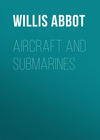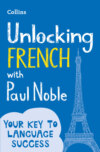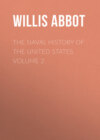Kitabı oku: «Aircraft and Submarines», sayfa 11
Americans, perhaps, gave exaggerated importance to the work of the Lafayette Escadrille which was manned wholly by American boys, and which, while in service from the very beginning of the war, was the first section of the French Army permitted to display the flag of the United States in battle after our declaration of war. It was made up, in the main, of young Americans of good family and independent means, most of them being college students who had laid down their books for the more exciting life of an airman. They paid heavily in the toll of death for their adventure and for the conviction which led them to take the side of democracy and right in the struggle against autocracy and barbarism months, even years, before their nation finally determined to join with them. In the first two and a half years of the war, seven of the aviators in this comparatively small body lost their lives.
Harvard College was particularly well represented in the American Flying Corps – although this is a proper and pertinent place to say that the sympathy shown for the allied cause by the young collegians of the United States was a magnificent evidence of the lofty righteousness of their convictions and the spirit of democracy with which they looked out upon the world. When the leash was taken off by the declaration of war by the United States the college boys flocked to training camps and enlistment headquarters in a way that bade fair to leave those institutions of learning without students for some years to come.
But to hark back to Harvard, it had in the Lafayette Escadrille five men in 1916; three of these, Kiffen Rockwell, Norman Prince, and Victor Chapman, were killed in that year. A letter published in Harvard Volunteers in Europe tells of the way these young gladiators started the day's work:
Rockwell called me up at three: "Fine day, fine day, get up!" It was very clear. We hung around at Billy's [Lieutenant Thaw] and took chocolate made by his ordonnance. Hall and the Lieutenant were guards on the field; but Thaw, Rockwell, and I thought we would take a tour chez les Boches. Being the first time the mechanaux were not there and the machine gun rolls not ready. However it looked misty in the Vosges, so we were not hurried. "Rendezvous over the field at a thousand metres," shouted Kiffen. I nodded, for the motor was turning; and we sped over the field and up.
In my little cockpit from which my shoulders just protrude I have several diversions besides flying. The compass, of course, and the map I keep tucked in a tiny closet over the reservoir before my knees, a small clock and one altimetre. But most important is the contour, showing revolutions of the motor which one is constantly regarding as he moves the manettes of gasoline and gas back and forth. To husband one's fuel and tease the motor to round eleven takes attention, for the carburetor changes with the weather and the altitude… The earth seemed hidden under a fine web such as the Lady of Shalott wove. Soft purple in the west, changing to shimmering white in the east. Under me on the left the Vosges like rounded sand dunes cushioned up with velvety light and dark masses (really forests), but to the south standing firmly above the purple cloth like icebergs shone the Alps. My! they look steep and jagged. The sharp blue shadows on their western slopes emphasized the effect. One mighty group standing aloof to the west – Mount Blanc perhaps. Ah, there are quantities of worm-eaten fields my friends the trenches – and that town with the canal going through it must be M – . Right beside the capote of my engine, showing through the white cloth a silver snake – the Rhine!
What, not a quarter to six, and I left the field at five! Thirty-two hundred metres. Let's go north and have a look at the map.
While thus engaged a black puff of smoke appeared behind my tail and I had the impression of hearing a piece of iron hiss by. "Must have got my range first shot!" I surmised, and making a steep bank piqued heavily. "There, I have lost them now." The whole art of avoiding shells is to pay no attention till they get your range and then dodge away, change altitude, and generally avoid going in a straight line. In point of fact, I could see bunches of exploding shells up over my right shoulder not a kilometre off. They continued to shell that section for some time; the little balls of smoke thinning out and merging as they crossed the lines.
In the earlier days of the war, when the American aviators were still few, their deeds were widely recounted in their home country, and their deaths were deplored as though a personal loss to many of their countrymen. Later they went faster and were lost in the daily reports. Among those who had early fixed his personality in the minds of those who followed the fortunes of the little band of Americans flying in France was Kiffen Rockwell, mentioned in an earlier paragraph, and one of the first to join the American escadrille. Rockwell was in the war from sincere conviction of the righteousness of the Allies' cause.
"I pay my part for Lafayette, and Rochambeau," he said proudly, when asked what he was doing in a French uniform flying for France. And pay he did though not before making the Germans pay heavily for their part. Once, flying alone over Thann, he came upon a German scout. Without hesitation the battle was on. Rockwell's machine was the higher, had the better position. As aërial tactics demanded he dived for the foe, opening fire as soon as he came within thirty or forty yards. At his fourth shot the enemy pilot fell forward in his seat and his machine fell heavily to earth. He lighted behind the German lines much to the victor's disgust, for it was counted a higher achievement to bring your foe to earth in your own territory. But Rockwell was able to pursue his victim far enough to see the wreck burst into flames.
Though often wounded, Rockwell scorned danger. He would go into action so bandaged that he seemed fitter to go to an hospital. He was always on the attack – "shoved his gun into the enemy's face" as his fellows in the escadrille expressed it. So in September, 1916, he went out after a big German machine, he saw flying in French territory. He had but little difficulty in climbing above it, and then dashed down in his usual impetuous manner, his machine gun blazing as he came on. But the German was of heavier metal mounting two machine guns. Just as to onlookers it seemed that the two machines would crash together, the wings of one side of Rockwell's plane suddenly collapsed and he fell like a stone between the lines. The Germans turned their guns on the pile of wreckage where he lay, but French gunners ran out and brought his body in. His breast was all blown to pieces with an explosive bullet – criminal, of course, barbarous and uncivilized, but an everyday practice of the Germans.
Rockwell was given an impressive funeral. All the British pilots, and five hundred of their men marched, and the bier was followed by a battalion of French troops. Over and around the little French graveyard aviators flew dropping flowers. In later days less ceremony attended the last scene of an American aviator's career.
Another American aviator, also a Harvard man, who met death in the air, was Victor Chapman of New York, a youth of unusual charm, high ideals, and indomitable courage. At the very outbreak of the war he enlisted in the French Foreign Legion – a rough entourage for a college-bred man. Into the Foreign Legion drifted everything that was doubtful, and many that were criminal. No questions were asked of those who sought its hospitable ranks, and readers of Ouida's novel Under Two Flags will recall that it enveloped in its convenient obscurity British lordlings and the lowest of Catalonian thieves. But in time of actual war its personnel was less mixed, and Chapman's letters showed him serving there contentedly as pointer of a mitrailleuse. But not for long. Most of the spirited young Americans who entered the French Army aspired to serve in the aviation corps, and Chapman soon was transferred to that field. There he developed into a most daring flyer. On one occasion, with a bad scalp wound, after a brush with four German machines, he made his landing with his machine so badly wrecked that he had to hold together the broken ends of a severed control with one hand, while he steered with the other. Instead of laying up for the day he had his mechanician repair his machine while a surgeon repaired him, then, patched up together, man and machine took the air again in search for the Boches.
In June, 1916, though still suffering from a wound in the head, he started in his machine to carry some oranges to a comrade lying desperately wounded in a hospital some miles away. On the way he saw in the distance behind the German lines two French airmen set upon by an overwhelming force of Germans. Instantly he was off to the assistance of his friends, plunging into so unequal a fight that even his coming left the other Americans outnumbered. But he had scarce a chance to strike a blow. Some chance shot from a German gun put him out of action. All that the other two Americans, Lufbery and Prince, knew was that they saw a French machine come flying to their aid, and suddenly tip and fall away to earth. Until nightfall came and Chapman failed to return none was sure that he was the victim.
The part played by young Americans as volunteers for France before the United States entered upon the war was gallant and stimulating to national pride. It showed to the world – and to our own countrymen who needed the lesson as much as any – that we had among our youth scores who, moved by high ideals, stood ready to risk their lives for a sentiment – stood ready to brave the myriad discomforts of the trenches, the bursting shrapnel, the mutilating liquid fire, the torturing gas that German autocracy should be balked of its purpose of dominating the world.
And the service of these boys aided far more than they knew. The fact that our countrymen in numbers were flying for France kept ever before the American people the vision of that war in the air of which poets and philosophers had dreamed for ages. It brought home to our people the importance of aviation before our statesmen could begin to see it. It set our boys to reading of aircraft, building model planes, haunting the few aviation fields which at the time our country possessed. And it finally so filled the consciousness of our people with conviction of the supreme importance of aviation as an arm of the national armed service that long before the declaration of war the government was embarrassed by the flood of volunteers seeking to be enrolled in the flying forces of the nation.
CHAPTER IX
THE UNITED STATES AT WAR
The entrance of the United States upon the war was the signal for a most active agitation of the question of overwhelming the enemy with illimitable fleets of aircraft. Though the agitation was most vociferous in this country whence it was hoped the enormous new fleets of aircraft would come, it was fomented and earnestly pressed by our Allies. France sent a deputation of her leading flyers over to supervise the instruction of our new pilots. England contributed experts to advise as to the construction of our machines. The most comprehensive plans were urged upon Congress and the Administration for the creation of a navy of the air. A bill for an initial appropriation of $640,000,000, for aircraft purposes alone, was passed and one for a Department of Aeronautics to be established, co-ordinate with those of War and the Navy, its secretary holding a seat in the cabinet, was introduced in Congress. Many of the most eminent retired officers of the navy joined in their support. Retired officers only because officers in active service were estopped from political agitation.
There was every possible reason for this great interest in the United States in wartime aviation. The nation had long been shamefaced because the development of the heavier-than-air machines, having their origin undoubtedly in the inventive genius of Professor Langley and the Wrights, had been taken away from us by the more alert governments of France and Germany. The people were ready to buy back something of our lost prestige by building the greatest of air fleets at the moment when it should exercise the most determinative influence upon the war.
But more. We entered upon the war in our chronic state of unpreparedness. We were without an army and without equipment for one. To raise, equip, and drill an army of a million, the least number that would have any appreciable effect upon the outcome of the war, would take months. When completed we would have added only to the numerical superiority of the Allies on the Western Front. The quality of a novel and decisive contribution to the war would be lacking.
So too it was with our navy. The British Navy was amply adequate to deal with the German fleet should the latter ever leave its prudent retreat behind Helgoland and in the bases of Kiel and Wilhelmshaven. True it was not capable of crushing out altogether the submarine menace, but it did hold the German underwater boats down to a fixed average of ships destroyed, which was far less than half of what the Germans had anticipated. In this work our ships, especially our destroyers, took a notable part.
The argument for a monster fleet of fighting aircraft, thus came to the people of the United States in a moment of depression and perplexity. By land the Germans had dug themselves in, holding all of Belgium and the thousands of square miles of France they had won in their first dash to the Marne. What they had won swiftly and cheaply could only be regained slowly and at heavy cost. True, the Allies were, day by day, driving them back from their position, but the cost was disheartening and the progress but slow.
By sea the Germans refused to bring their fleet to battle with their foes. But from every harbour of Belgium, and from Wilhelmshaven and Kiel, they sent out their sinister submarines to prey upon the commerce of the world – neutral as well as belligerent. Against them the navies of the world were impotent. To the threat that by them Germany would starve England into cowering surrender, the only answer was the despairing effort to build new ships faster than the submarines could sink those afloat – even though half a million tons a month were sent to the bottom in wasteful destruction.
Faced by these disheartening conditions, wondering what they might do that could be done quickly and aid materially in bringing the war to a triumphant conclusion, the American people listened eagerly to the appeals and arguments of the advocates of a monster aërial fleet.
Listen [said these advocates], we show you a way to spring full panoplied into the war, and to make your force felt with your first stroke. We are not preaching dreadnoughts that take four years to build. We are not asking for a million men taking nearly a year to gather, equip, drill, and transport to France, in imminent danger of destruction by the enemy's submarines every mile of the way.
We ask you for a cheap, simple device of wood, wire, and cloth, with an engine to drive it. All its parts are standardized. In a few weeks the nation can be equipped to turn out 2000 of them weekly. We want within the year 100,000 of them. We do not ask for a million men. We want 10,000 bright, active, hardy, plucky American boys between 20 and 25 years of age. We want to give them four months' intensive training before sending them into the air above the enemy's lines. In time we shall want 25,000 to 35,000 but the smaller number will well do to open the campaign.
And what will they effect?
Do you know that to-day the eyes of an army are its airplanes? Cavalry has disappeared practically. If a general wishes to pick out a weak point in his enemy's line to assault he sends out airmen to find it. If he is annoyed by the fire of some distant unseen battery over the hills and far away he sends a man in an airplane who brings back its location, its distance, and perhaps a photograph of it in action. If he suspects that his foe is abandoning his trenches, or getting ready for an attack, the ready airmen bring in the facts.
And of course the enemy's airmen serve their side in the same manner. They spy out what their foe is doing, and so far as their power permits prevent him from seeing what they are doing.
Now suppose one side has an enormous preponderance of aircraft – six to one, let us say. It is not believed, for example, that at this moment Germany has more than 10,000 aircraft on the whole western front. Let us imagine that through the enterprise of the United States our Allies were provided with 25,000 on one sector which we intended to make the scene of an attack on the foe. Say the neighbourhood of Arras and Lille. For days, weeks perhaps, we would be drawing troops toward this sector from every part of the line. Through the reports of spies the enemy's suspicions would be aroused. It is the business of an efficient general to be suspicious. He would send out his airplanes to report on the activities of the other side. Few would come back. None would bring a useful report. For every German plane that showed above the lines three Allied planes would be ready to attack and destroy it or beat it back. The air would be full of Allied airmen – the great bombing planes flying low and inundating the trenches with bombs, and the troops on march with the deadly fléchettes. Over every German battery would soar the observation plane indicating by tinsel or smoke bombs the location of the guns, or even telegraphing it back by wireless to the Allied batteries safe in positions which the blinded enemy could never hope to find. Above all in myriads would be soaring the swift fighting scouts, the Bleriots, Nieuports, Moranes or perhaps some new American machine to-day unknown. Let the wing of a Boche but show above the smoke and they would be upon him in hordes, beating him to the ground, enveloping him in flames, annihilating him before he had a chance to observe, much less to report.
What think you would be the result on that sector of the battle line? Why the foe would be cut to pieces, demolished, obliterated. Blinded, he would be unrelentingly punished by an adversary all eyes. Writhing under the concentrated fire of a thousand guns he could make no response, for his own guns could not find the attacking batteries. Did he think to flee? His retreating columns would be marked down by the relentless scouts in the air, and the deadly curtain of fire from well-coached batteries miles away would sweep every road with death. If in desperation he sought to attack he would do so ignorant whether he were not hurling his regiments against the strongest part of the Allied line, and with full knowledge of the fact that though he was blinded they had complete information of his strength and dispositions.
The argument impressed itself strongly upon the mind of the country. There appeared indeed no public sentiment hostile to it nor any organized opposition to the proposition for an enormous appropriation for purposes of aviation. The customary inertia of Congress delayed the actual appropriation for some months. But the President espoused its cause and the Secretaries both of War and the Navy warmly recommended it, although they united in opposing the proposition to establish a distinct department of aeronautics with a seat in the Cabinet. Being human neither one desired to let his share of this great new gift of power slip out of his hands. Leading in the fight for this legislation was Rear-Admiral Robert E. Peary, U. S. N., retired, the discoverer of the North Pole. Admiral Peary from the very outbreak of the war consecrated his time and his abilities to pushing the development of aeronautics in the United States. He was continually before Congressional committees urging the fullest appropriations for this purpose. In his first statement before the Senate Committee he declared that "in the immediate future the air service will be more important than the army and navy combined," and supported that statement by reference to utterances made by such British authorities as Mr. Balfour, Lord Charles Beresford, Lord Northcliffe, and Lord Montague. In an article published shortly after his appearance before the Senate Committee, the Admiral summarized in a popular way his views as to the possibility of meeting the submarine menace with aircraft, and what the United States might do in that respect. He wrote:
We are receiving agreeable reports as to the efficiency of the American destroyer flotilla now operating against submarines in the North Sea. An unknown naval officer, according to the newspapers of May 30th, calls for the immediate construction of from 100 to 200 additional American destroyers.
By all means let us have this force – when it can be made ready – but it would take at least two years to construct, equip, and deliver such a heavy additional naval tonnage, while 200 fighting seaplanes, with a full complement of machine guns, bombs, microphones, and aërial cameras, could be put in active service in the North Sea within six months.
Seaplanes, small dirigibles on the order of the English "blimp" type, and kite balloons have already shown themselves to be more effective in detecting submarines than are submarine chasers or armed liners.
Not only have the British, French, German, and Turkish forces destroyed trawlers, patrol boats, and transports by aircraft, but successful experiments in airplane submarine hunting have also been made in this country.
In September, 1916, our first Aërial Coast Patrol Unit, in acting as an auxiliary to the Mosquito Squadron in the annual manœuvres of the Atlantic fleet, detected objects smaller than the latest type of German submarines from fifteen to twenty feet below the surface.
A more complete aërial submarine hunt took place on March 26th of this year. This was the real thing, because the fliers were looking for German U-boats. Inasmuch as the Navy Department is still waiting before establishing its first and only aeronautical base on the Atlantic seaboard, the honour of having conducted the first aërial hunt of the enemy submarines in American history went to the civilian aviators who are soon to be a part of the Aërial Reserve Squadron at Governor's Island and to the civilian instructors and aërial reservists connected with the Army Aviation School at Mineola, Long Island.
These hawks of the air darted up and down the coast in search of the enemy, often flying as far as eleven miles out to sea. The inlets and bays were searched, vessels plotted, compass direction and time when located were given.
No enemy submarines were found. It developed that the supposed submarines were two patrol motor-boats returning from a trial trip. Nevertheless the incident is illuminating, and the official statement of the Navy Department closed with the words: "This incident emphasizes the need of hydroaëroplanes for naval scouting purposes."
It is also interesting to note what happened when Lawrence Sperry went out to sea one day last summer in his hydroplane and failed to return. Two seaplanes and three naval destroyers were sent in search of him. In forty minutes the seaplanes returned with the news that they had located Sperry floating safely on the water. At the end of the day, after several hours of search, the destroyers came back without having seen Sperry at all.
Those who may still believe that we Americans cannot build aircraft and that all the exploits we read so much about in the newspapers taking place on the other side are being done in foreign aircraft will be surprised to know that a large number of the big flying boats now in use in the English navy, harbour, and coast defence work are Curtiss machines, designed and built in this country by Americans, with American material and American engines.
Great Britain wants all the machines of this type that it can get, and sees no reason why we cannot do the same thing in protecting our own Atlantic seaboard. I quote from C. G. Grey, editor of The London Aeroplane:
"Curiously enough, these big flying boats originated in America, and, if America is seriously perturbed about the fate of American shipping and American citizens travelling by sea in the vicinity of Europe, it should not be a difficult matter for America to rig up in a very small space of time quite a fleet of seaplane carriers suitable for the handling of these big seaplanes. If each seaplane ship were armed with guns having a range of five to ten miles, and if the gunners were practised in co-operating with airplane spotters, such ships ought to be the very best possible insurance for American lives and goods on the high seas."
I quote from The Associated Press report from Paris on May 14th to show the relative importance of aëroplanes in submarine attacks:
"During the last three months French patrol boats have had twelve engagements with submarines, French hydroaëroplanes have fought them thirteen times, and there have been sixteen engagements between armed merchantmen and submarines."
Henry Woodhouse, one of the most distinguished authorities on aeronautics in the United States, in his standard Textbook on Naval Aeronautics, published by the Century Company, has assembled the following data on submarine and aeroplane combats:
"On May 4, 1915, the German Admiralty reported an engagement between a German dirigible and several British submarines in the North Sea. The submarines fired on the dirigible without success, whereas bombs from the dirigible sank one submarine.
"On May 31, 1915, the German Admiralty announced the sinking of a Russian submarine by bombs dropped by German naval aviators near Gotland.
"On July 1, 1915, the Austrian submarine U-11 was destroyed in the Adriatic by a French aeroplane, which swooped suddenly and dropped three bombs directly on the deck of the submarine. The craft was destroyed and the entire crew of twenty-five were lost.
"On July 27, 1915, a German submarine in the Dardanelles was about to launch a torpedo at a British transport filled with troops and ammunition, when British aviators gave the alarm to the transport, and immediately began dropping bombs at the submarine, which had to submerge and escape hurriedly, without launching its torpedo.
"On August 19, 1915, the Turkish War Office stated that an Allied submarine had been sunk in the Dardanelles by a Turkish aeroplane.
"On August 26, the Secretary of the British Admiralty announced that Squadron Commander Arthur W. Bigsworth in a single-handed attack bombed and destroyed a German submarine off Ostend.
"Lieutenant Viney received the Victoria Cross and Lieutenant de Sincay was recommended for the Legion of Honour for having flown over a German submarine and destroyed it with bombs off the Belgian coast on November 18, 1915.
"Early in 1916 an Austrian seaplane sank the French submarine Foucault in the southern Adriatic. Lieutenant Calezeny was the pilot and the observer was Lieutenant von Klinburg. After crippling the submarine they then performed the remarkable feat of calling another Austrian seaplane and rescuing the entire French crew, two officers and twenty seven men, in spite of the fact that a high sea was running at the time."
It will be noted that Admiral Peary lays great stress on the supreme value of aircraft as foes of the submarine. This was due to the fact that at about the time of his appearance before the Senate Committee the world was fairly panic-stricken by the vigour and effect of the German submarine campaign and its possible bearing upon the outcome of the war. Of that campaign I shall have more to say in the section of this book dealing with submarines. But the subject of the undersea boat in war became at this time inextricably interwoven with that of the aërial fleets, and the sudden development of the latter, together with the marked interest taken in it by our people, cannot be understood without some description of the way in which the two became related.
From the very beginning of the war the Germans had prosecuted a desultory submarine warfare on the shipping of Great Britain and had extended it gradually until neutral shipping also was largely involved. All the established principles of international law, or principles that had been supposed to be established, were set at naught. In bygone days enemy merchant ships were subject to destruction only after their crews had been given an opportunity to take to the boats. Neutral ships bearing neutral goods, even if bound to an enemy port, were liable to destruction only if found upon visit to be carrying goods that were contraband of war. The list of contraband had been from time immemorial rigidly limited, and confined almost wholly to munitions of war, or to raw material used in their construction. But international law went by the board early in the war. Each belligerent was able to ascribe plausible reasons for its amendment out of recognizable form. Great Britain established blockades two hundred miles away from the blockaded ports because the submarines made the old practice of watching at the entrance of the port too perilous. The list of contraband of war was extended by both belligerents until it comprehended almost every useful article grown, mined, or manufactured. But the amendment to international law which acted as new fuel for the flames of war, which aroused the utmost world-wide indignation, and which finally dragged the United States into the conflict, was that by which Germany sought to relieve her submarine commanders of the duty of visiting and searching a vessel, or of giving its people time to provide for their safety, before sinking it.
The German argument was that the submarine was unknown when the code of international law then in force was formulated. It was a peculiarly delicate naval weapon. Its strength lay in its ability to keep itself concealed while delivering its attack. If exposed on the surface a shot from a small calibred gun striking in a vital point would instantly send it to the bottom. If rammed it was lost. Should a submarine rise to the surface, send an officer aboard a ship it had halted, and await the result of his search, it would be exposed all the time to destruction at the hands of enemy vessels coming up to her aid. Indeed if the merchantman happened to carry one gun a single shot might put the assailant out of business. Accordingly the practice grew up among the Germans of launching their torpedoes without a word of warning at their helpless victim. The wound inflicted by a torpedo is such that the ship will go down in but a few minutes carrying with it most of the people aboard. The most glaring, inexcusable, and criminal instance of this sort of warfare was the sinking without warning of the great passenger liner, Lusitania, by which more than eleven hundred people were drowned, one hundred and fourteen of them American citizens.










